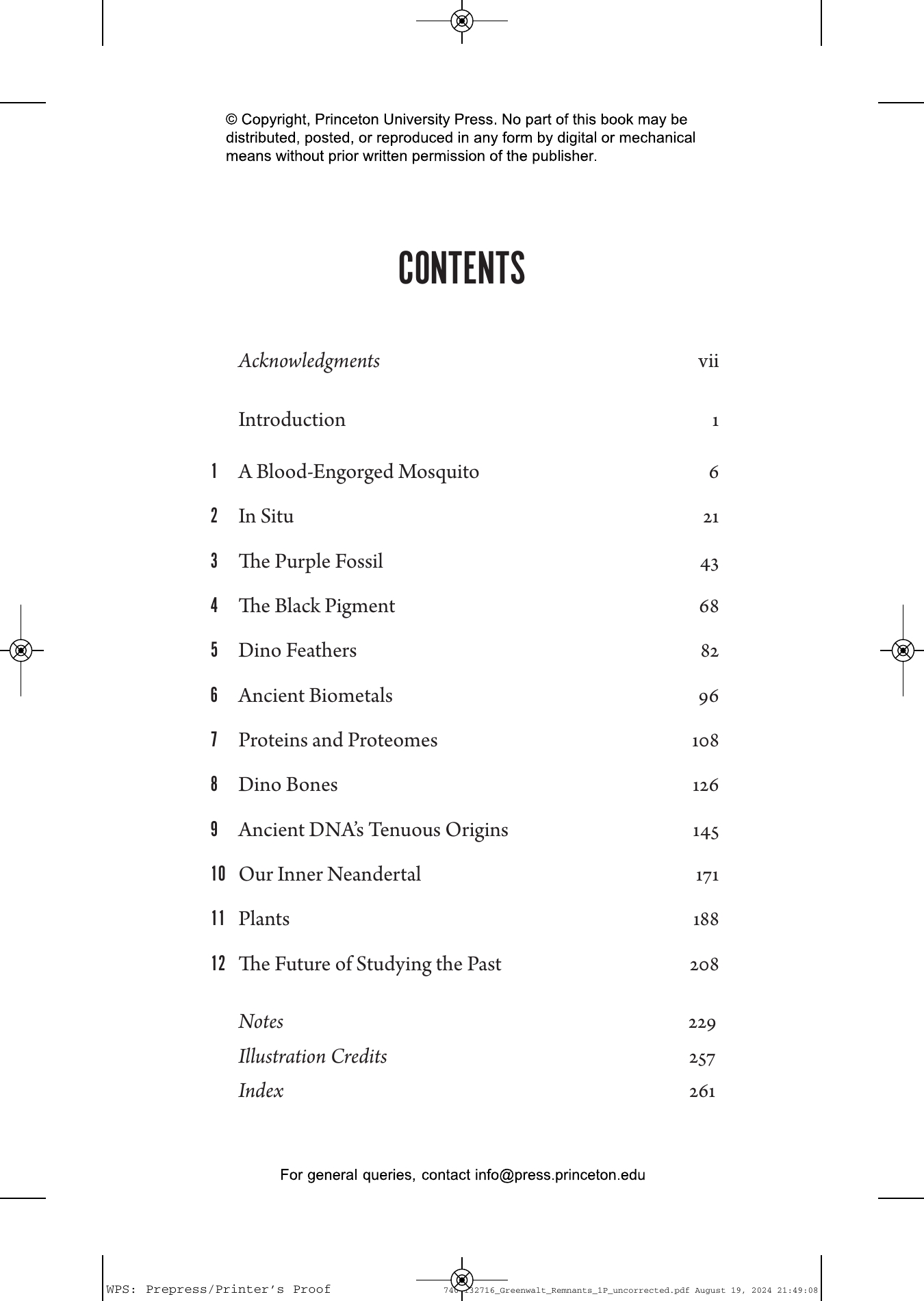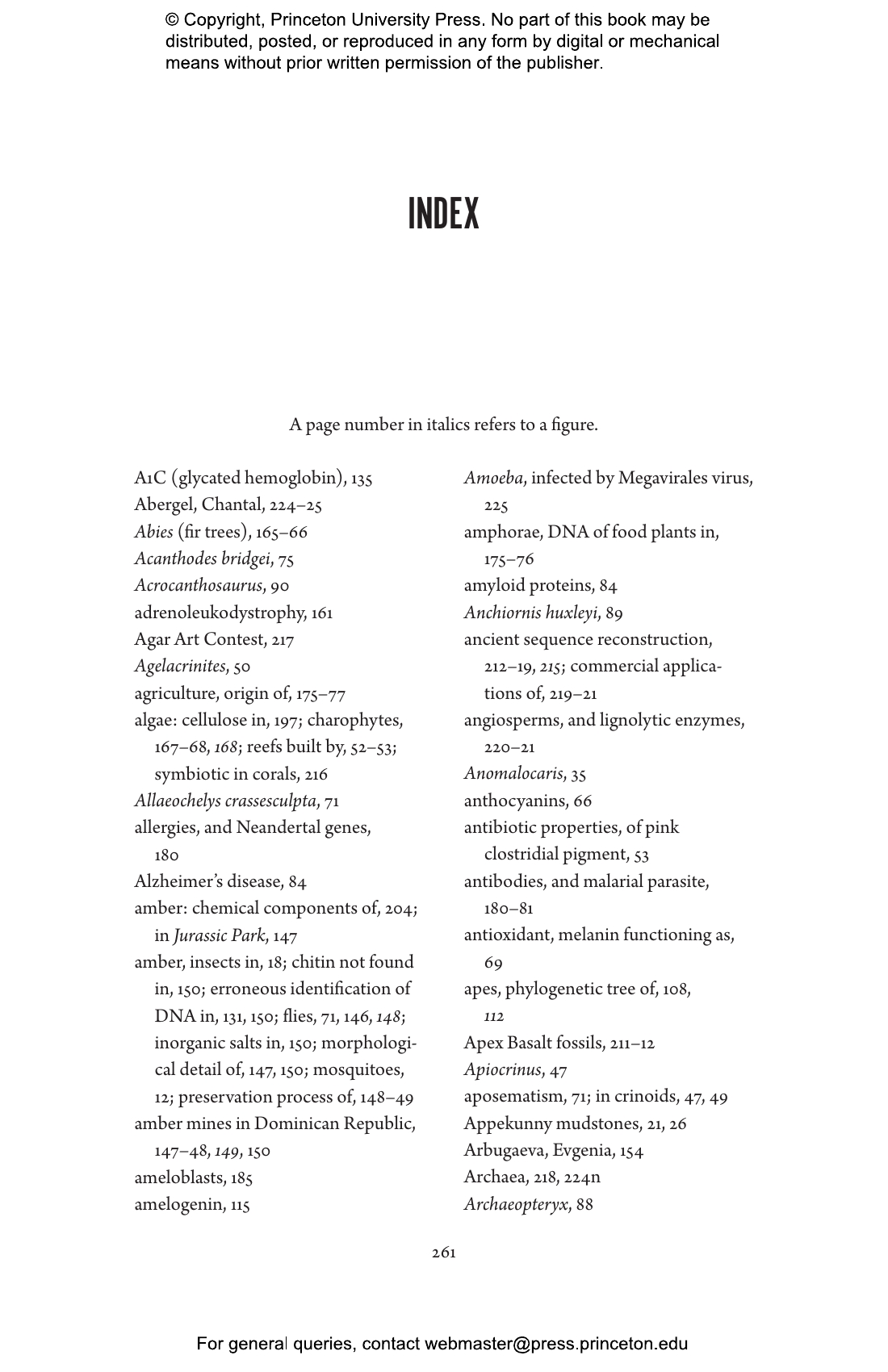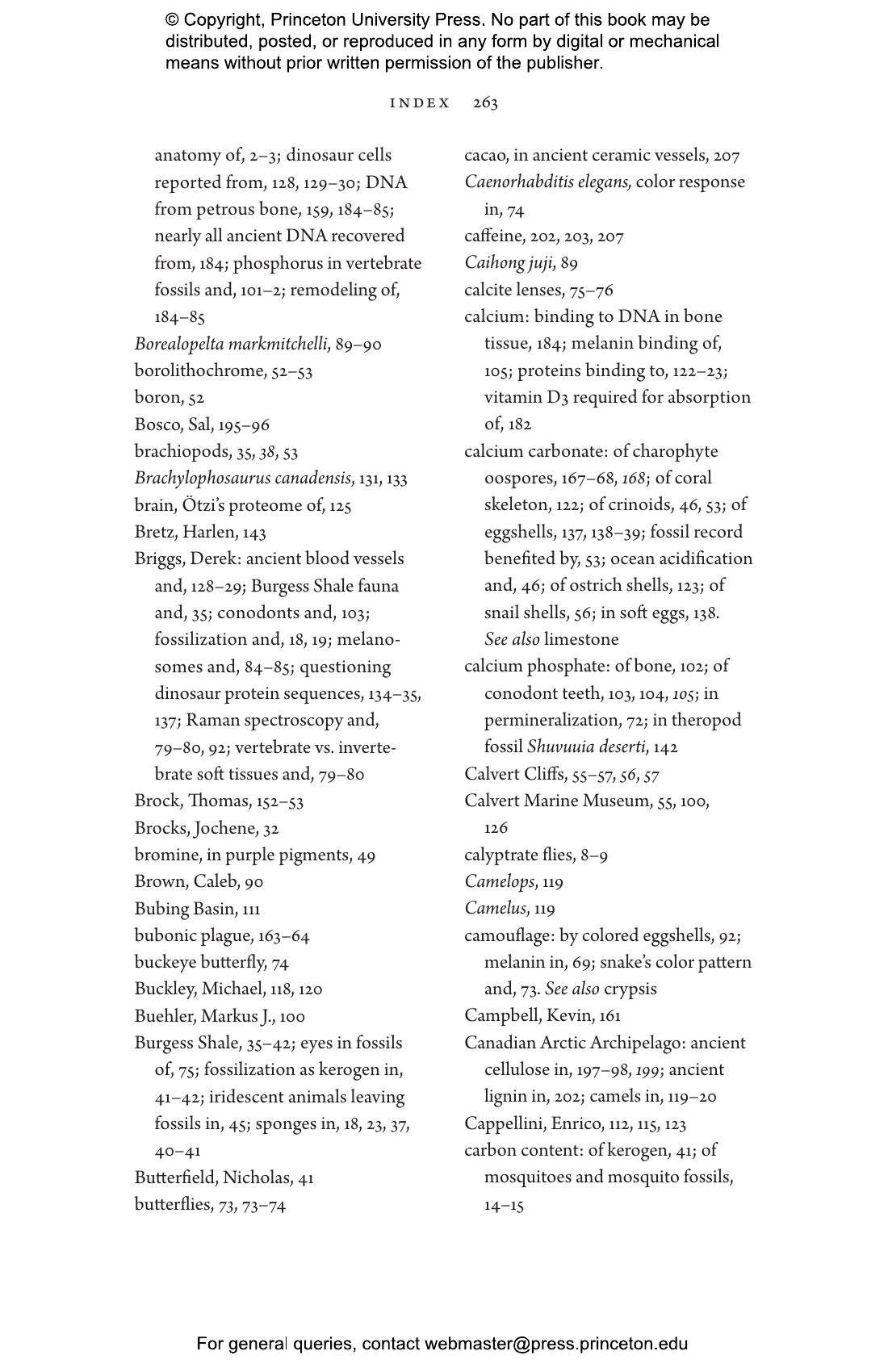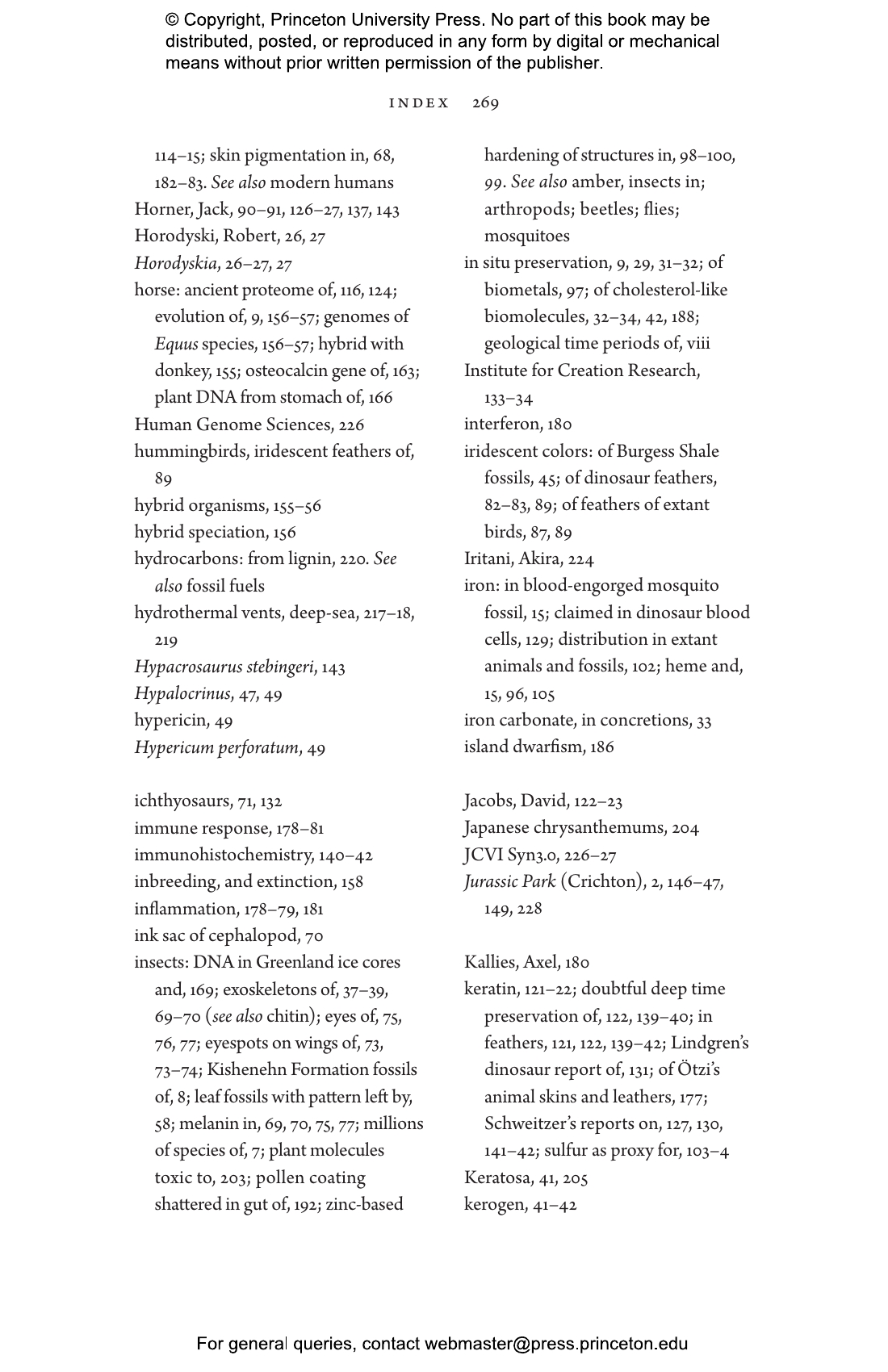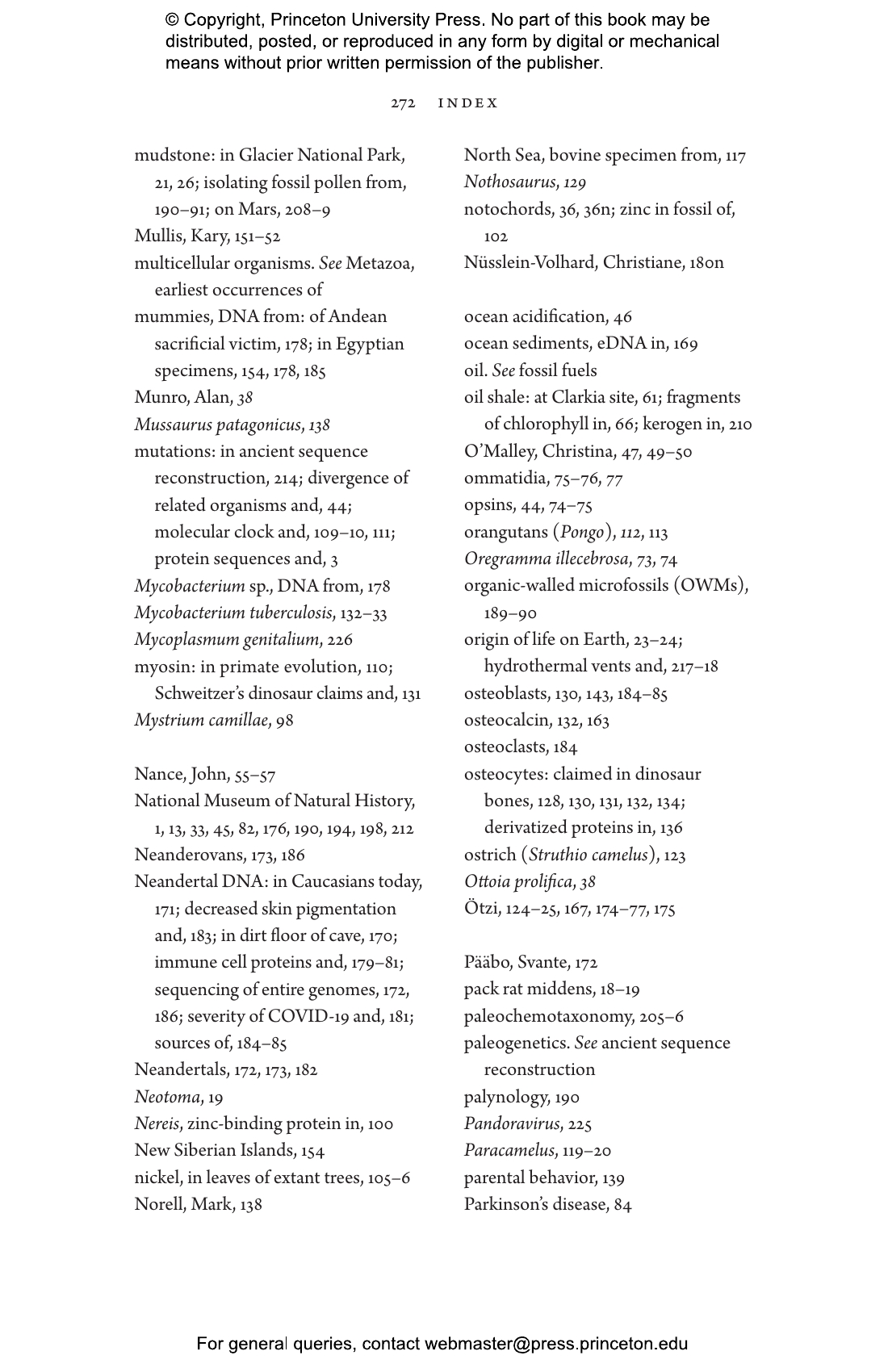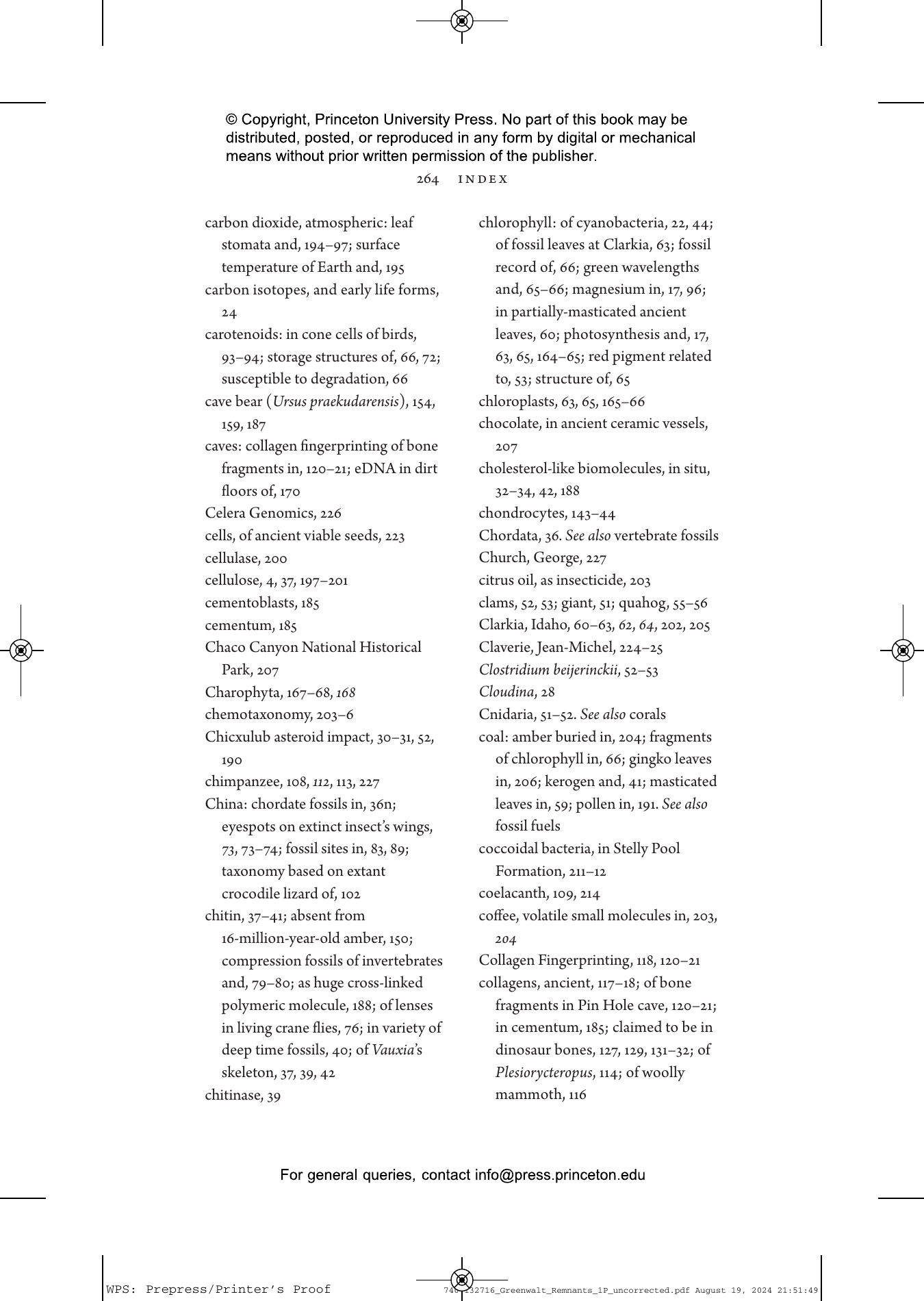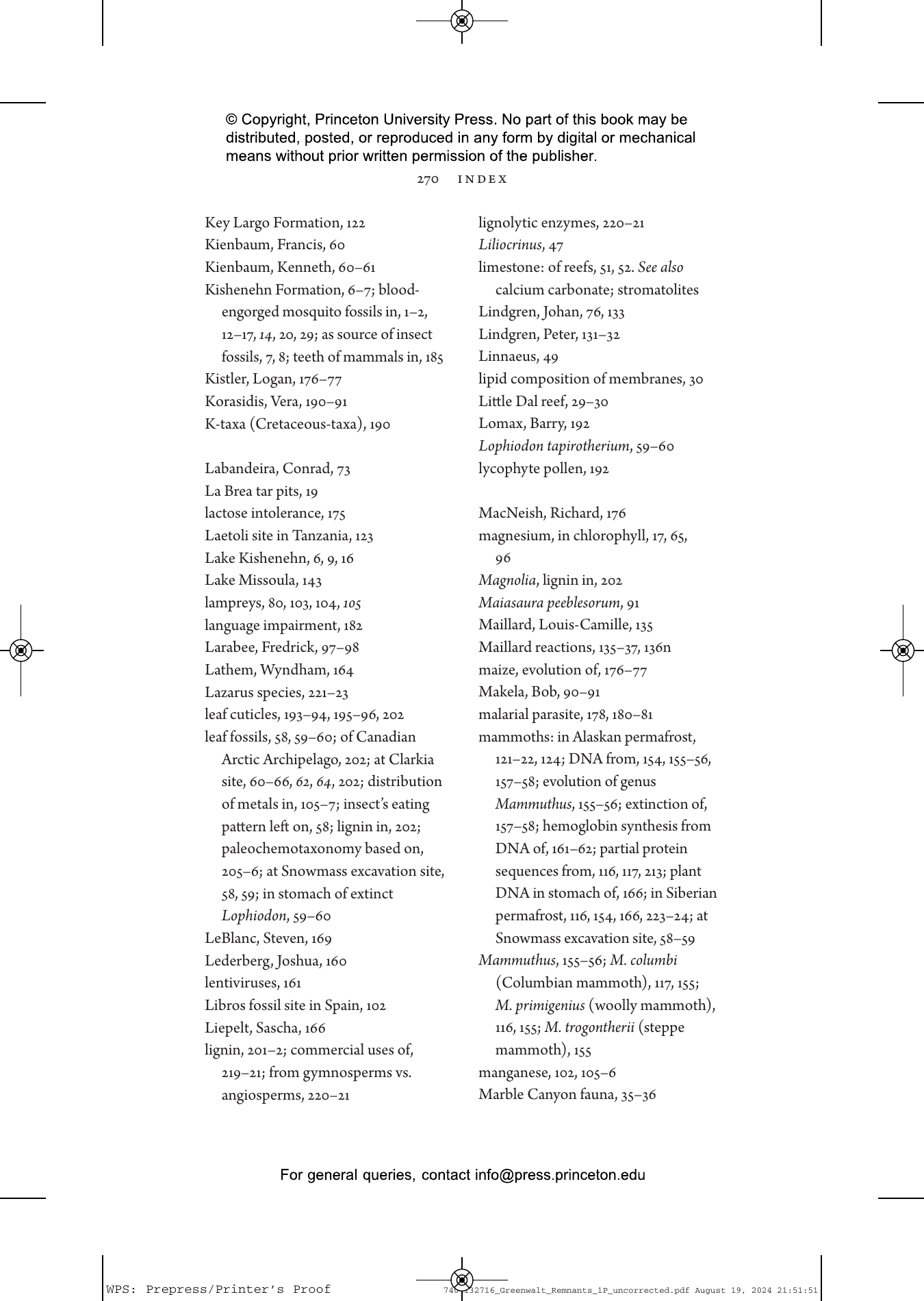We used to think of fossils as being composed of nothing but rock and minerals, all molecular traces of life having vanished long ago. We were wrong. Remnants of Ancient Life reveals how the new science of ancient biomolecules鈥攑igments, proteins, and DNA that once functioned in living organisms tens of millions of years ago鈥攊s opening a new window onto the evolution of life on Earth.
Paleobiologists are now uncovering these ancient remnants in the fossil record with increasing frequency, shedding vital new light on long-extinct creatures and the lost world they inhabited. Dale Greenwalt is your guide to these astonishing breakthroughs. He explains how ancient biomolecules hold the secrets to how mammoths dealt with the bitter cold, what colors dinosaurs exhibited in mating displays, how ancient viruses evolved to become more dangerous, and much more. Each chapter discusses different types of biomolecules and the insights they provide about the physiology, behavior, and evolution of extinct organisms, many of which existed long before the age of dinosaurs.
A marvelous adventure of discovery, Remnants of Ancient Life offers an unparalleled look at an emerging science that is transforming our picture of the remote past. You will never think of fossils in the same way again.
Awards and Recognition
- Winner of the PROSE Award in Earth Science, Association of American Publishers
"[A] vivid, gripping book. . . . Dale Greenwalt . . . has written a riveting account of a field achieving revolutionary insights."鈥擲imon Ings, New Scientist
"[An] eye-opening guide to this new world of understanding, one that encompasses chemistry along with biology."鈥擠avid P. Barash, Wall Street Journal
"An accessible book on ancient life that focuses as much on chemistry as on biology."鈥擶ade Lee-Smith, Library Journal
"[Fascinating] . . . an unabashedly excited report from the front lines"鈥擲teve Donoghue, Open Letters Review
"The book provides a fascinating journey through the very latest in research into the origins of life on Earth. . . . No one should be intimidated by this highly readable work."鈥擠avid Gascoigne, Travels with Birds
"If you think you cannot stomach yet another popular book on palaeontology, think again. Remnants of Ancient Life is as fascinating as the inviting cover and subtitle suggest, managing to put a completely fresh gloss on the topic of palaeontology."鈥擫eon Vlieger, Inquisitive Biologist
"Greenwalt's book has few, if any, rivals and is thoroughly recommended as an accessible introduction to the rapidly emerging science of ancient biomolecules."鈥擯aul D. Taylor, Quarterly Review of Biology
“When you think of fossils, your mind likely goes straight to dinosaur skeletons and saber-toothed tiger skulls and ancient seashells. In this readable and engaging book, Dale Greenwalt introduces us to less heralded fossils: microscopic molecules like DNA, proteins, and pigment. Through his relatable prose and stories of discovery, Greenwalt convincingly argues that some of the smallest fossils have the biggest stories to tell.”—Steve Brusatte, New York Times bestselling author of The Rise and Fall of the Dinosaurs
“In Remnants of Ancient Life, Dale Greenwalt takes readers on a grand tour through our deepest history, guided by the tiniest of fossils. Engaging and personable, this book offers a fascinating discussion of the latest developments and discoveries in paleontology.”—Beth Shapiro, author of How to Clone a Mammoth
“If your perception of paleontology is stuck in the past, you need to read this book. Dale Greenwalt takes readers on a far-ranging expedition with biochemical fossil hunters who use trace elements, pigments, proteins, and DNA to reconstruct not only evolutionary lineages but the colors, diets, and behavior of long-vanished organisms—conjuring them out of rocks and back to life.”—Marcia Bjornerud, author of Timefulness
“Remnants of Ancient Life takes readers on a spirited tour of paleontology’s new frontier—ancient molecules preserved within fossils and sediments. From dinosaur behavior and the feeding strategies of extinct insects to the evolutionary relationships of mammoths and previously unknown cousins of Neanderthals, Greenwalt shows how ancient molecules are providing novel insights into our biological past.”—Andrew H. Knoll, author of A Brief History of Earth




